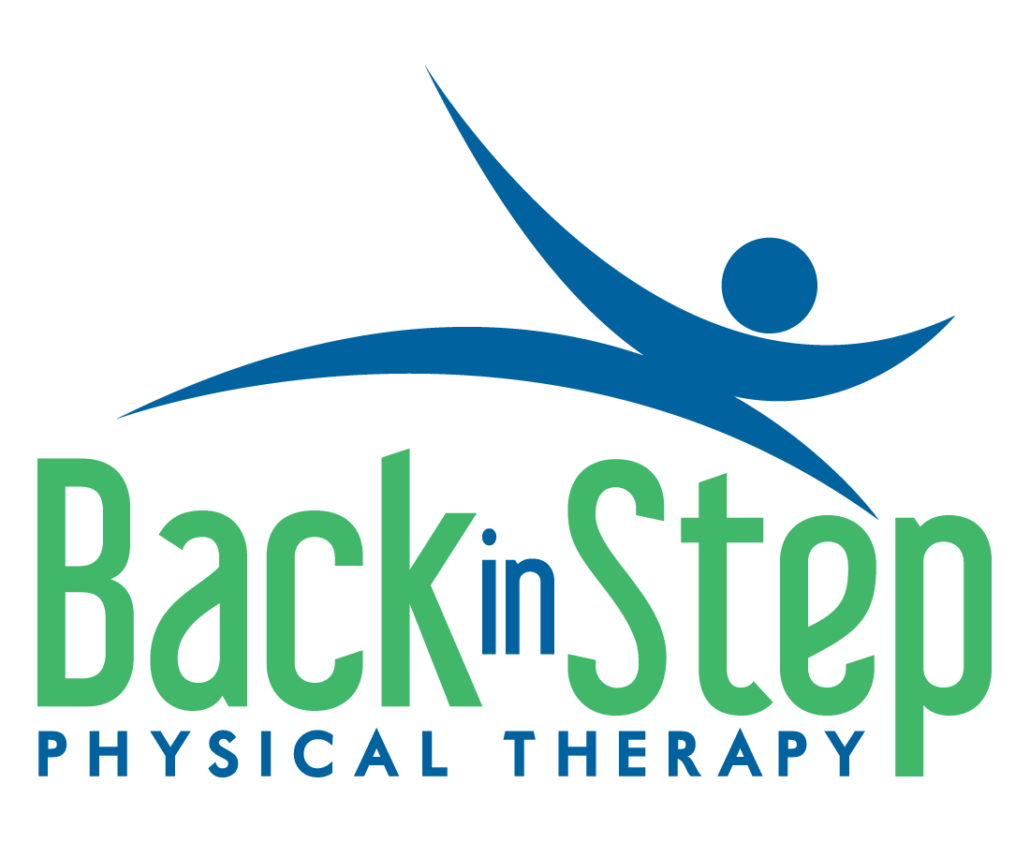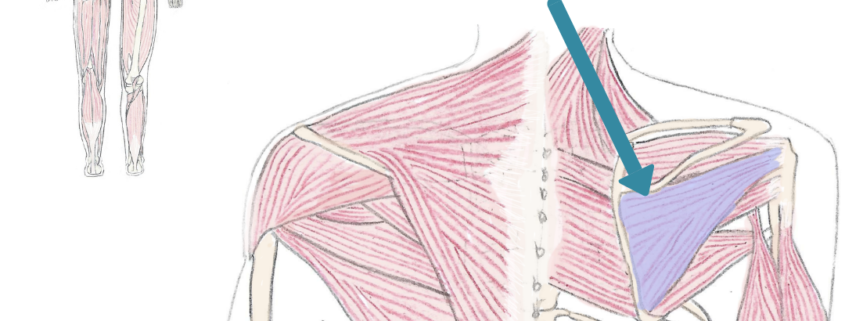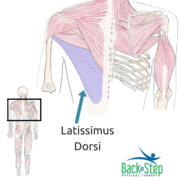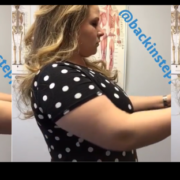Rotator Cuff Strength is Important!
The “rotator cuff” is something that a lot of people had heard of, but they’re not really familiar with what it actually does, why it’s important, etc. It’s also commonly called the wrong term – “rotator cup” or “rotary cup”, for example. The name tells you exactly what it does if you really think about it!
It’s a group of 4 muscles in the shoulder that surround the shoulder joint. Together, they provide the bulk of the stability for the shoulder itself, and surround most of the perimeter of the joint, much like any other type of cuff is used. For example, the cuff of a sleeve, handcuffs, and a blood pressure cuff surround another structure and provide some stability. This article will specifically talk about one of the muscles within this group – the infraspinatus.
The Anatomy & Function
The infraspinatus travels from the infraspinous fossa of the scapula (back of the shoulder blade) to the middle facet of the greater tubercle of the humerus (upper arm). It is one of the four rotator cuff muscles. Its innervation comes from the suprascapular nerve (C5-6).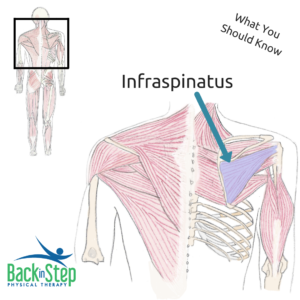
The infraspinatus helps with external rotation (turning your palm away from your body) of the shoulder and participates in abduction (moving your arm up from the side of your body). It also assists with stability of the shoulder joint and capsule.
A dysfunctional infraspinatus can contribute to arm or shoulder pain, upper back or shoulder blade pain, decreased range of motion and function of the arm. It can even be related to pain that travels through the arm, as far as the pinky finger.
What to Do About It
There are many ways to work on strengthening this muscle. This article describes an easier exercise to start with. We’re using a resistance band in this example, but this can also be done with a cable machine. You can use a free weight, but you then have to do this while lying on your side – otherwise, you’re not getting the right line of pull to be as effective.
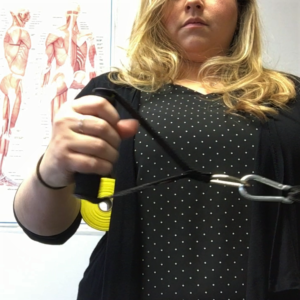
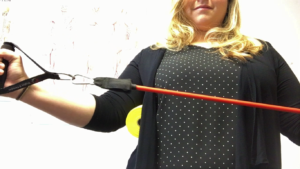
- Anchor the resistance band.
- Stand sideways to that anchor, with the band coming in front of your body.
- Keep your elbow bent at 90* and keep your elbow close in to your body.
- If you have trouble keeping it close to your body, put a small rolled up towel or other object between your arm and your body. If it drops, your elbow moved away from you.
- Keeping your thumb pointing up towards the ceiling, pull the band away from the anchor point.
- Only pull as far as you can comfortable go without twisting your body or shrugging your shoulder.
Give this exercise a try! If you’re experiencing any pain, hold off on doing the exercise and get in for an assessment with a physical therapist. You can contact us here for an appointment!
DISCLAIMER: The purpose of this site is to promote understanding of health, wellness, and prevention. The information on this site is not intended/implied to be a substitute for professional medical advice, diagnosis, or treatment. If you are experiencing pain, please see a medical professional.
